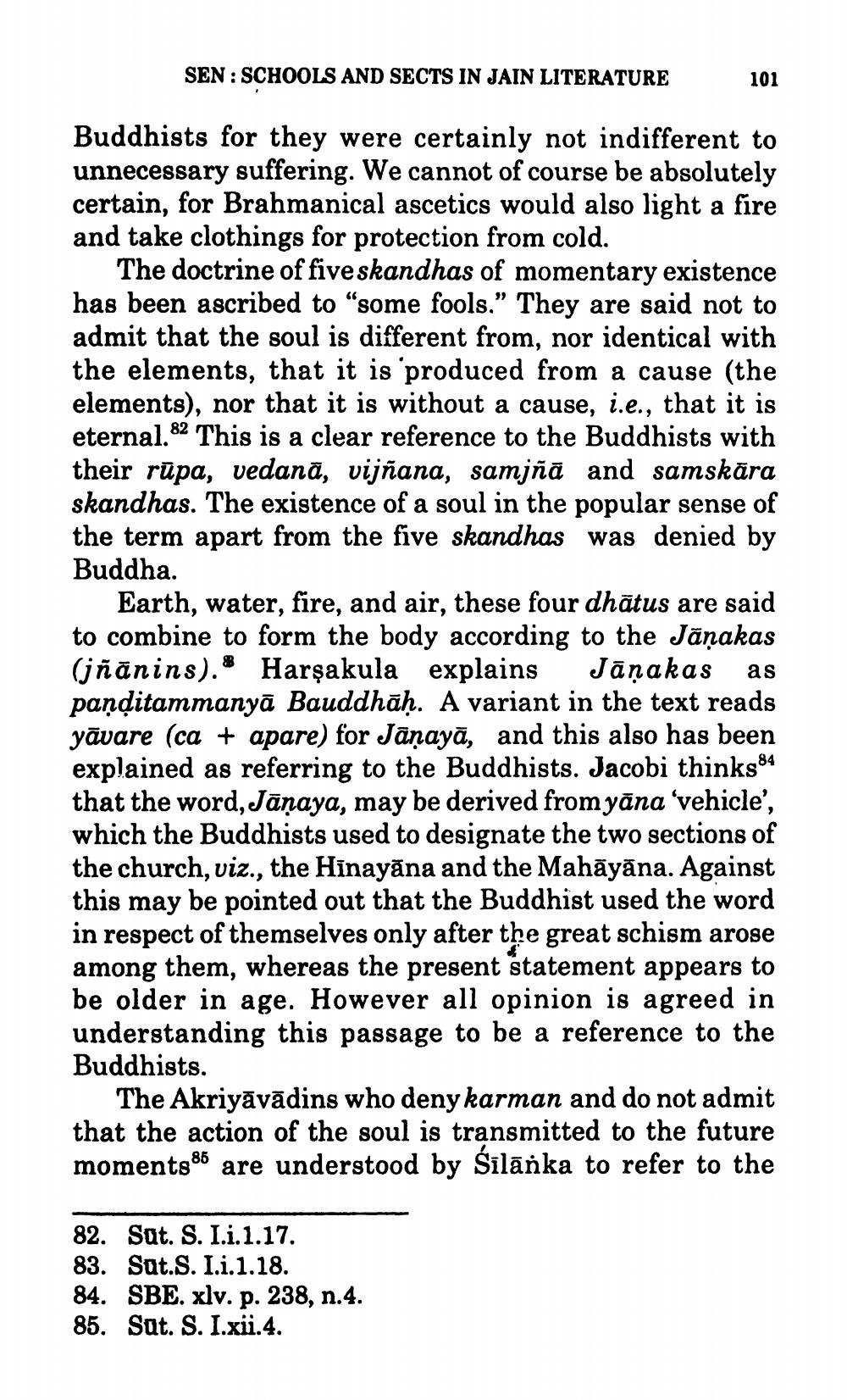________________
SEN : SCHOOLS AND SECTS IN JAIN LITERATURE
101
Buddhists for they were certainly not indifferent to unnecessary suffering. We cannot of course be absolutely certain, for Brahmanical ascetics would also light a fire and take clothings for protection from cold.
The doctrine of five skandhas of momentary existence has been ascribed to "some fools." They are said not to admit that the soul is different from, nor identical with the elements, that it is produced from a cause (the elements), nor that it is without a cause, i.e., that it is eternal.82 This is a clear reference to the Buddhists with their rupa, sedanā, vijñana, samjñā and samskāra skandhas. The existence of a soul in the popular sense of the term apart from the five skandhas was denied by Buddha.
Earth, water, fire, and air, these four dhātus are said to combine to form the body according to the Jāņakas (jñānins). Harşakula explains Jāņakas as paņditammanyā Bauddhāḥ. A variant in the text reads yāvare (ca + apare) for Jāņayā, and this also has been explained as referring to the Buddhists. Jacobi thinks 84 that the word, Jāņaya, may be derived from yāna ‘vehicle', which the Buddhists used to designate the two sections of the church, viz., the Hinayāna and the Mahāyāna. Against this may be pointed out that the Buddhist used the word in respect of themselves only after the great schism arose among them, whereas the present statement appears to be older in age. However all opinion is agreed in understanding this passage to be a reference to the Buddhists.
The Akriyāvādins who deny karman and do not admit that the action of the soul is transmitted to the future moments are understood by Śīlānka to refer to the
82. Sat. S. I.i.1.17. 83. Sut.S. I.i.1.18. 84. SBE. xlv. p. 238, n.4. 85. Sut. S. I.xii.4.




